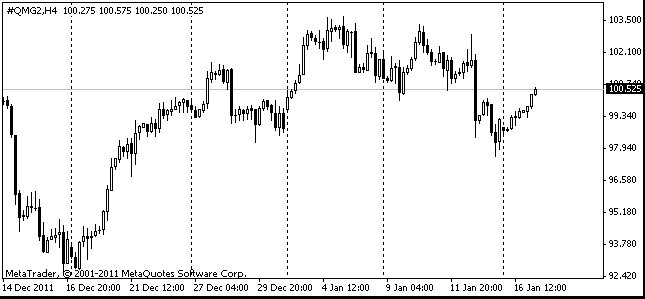EUR/usd
The US stocks continued their upsurge yesterday, Dow Jones grew by 0.3%, having recouped the previous decline and is now just 0.3% from its historic high. To some extent optimism in the stock markets (and simultaneous selling of the dollar) can be justified by Janet yellen's promise to continue stimulation of the economy, which functions poorer than its potential allows. This optimism boosts purchases of commonly-known risk-sensitive currencies, including the euro. eurusd formally remains in the downtrend and on Friday the decline seemed to be even faster. However, as we warned, the level of 1.30 is too important both for bulls and bears, so neither party wants to give it up without a fight. This level is also important because if bears win the continuous uptrend of the euro since last July will be broken. In this case, we should expect a move towards 1.50 as we described in the “Buy it if you dare” review. However, this question is still open. At present within the correctional move to the upper bound the bulls may set out for 1.3130/50, but we can hardly predict the outcome of this battle. Time is against the single currency. The longer the pair stays at 1.30 making no attempts to move up, the less possible it is that this move will actually take place. In regard to the future trends the current week is particularly important. On Thursday the ECB's interest rate decision is published and on Friday the US employment statistics are released. Both the indicators are known for their capacity to provoke great fluctuations and even reversals in the markets. So before the end of the week we do not expect any large-scale moves since all eyes will be turned to these events.

GBP/USD
The sterling was on the mend yesterday. After the poor data on Construction PMI it again suffered the pressure, but soon it found buyers, who took gbpusd back above 1.51. So, the construction stats didn't inspire hopes for recovery. The indicator dropped from 48.7 to 46.8 against the expected growth to 49.2. Generally speaking, the construction sector remains a weak link of the British economy. Since last June it, according to the PMI data, didn't shrink only in July and October. Construction is an indicator of the economy , but actually makes a tiny part of it. It's more important for Britain to have a healthy services sector. This indicator is released today and may either support a retracement of the sterling or completely disappoint investors.

AUD/USD
The aussie seems to have cheered up, now being as high as 1.0230, more than a figure above yesterday's levels. Besides the exterior positive from the demand for risky assets, the currency benefits from the fact that the rate is kept at the same level. Though most of the analysts predicted such an outcome, traders still believed that Glen Stevens might again pursue a preemptive tactic. Yet in the accompanying commentary he didn't miss an opportunity to point out that there is still some space for the further decline. On the whole the RBA keeps out of the affair now, since the preceding easing of the policy hasn't fully materialized in the economy yet and the external factors are sooner neutral than absolutely negative now.

oil
Against the growth of US and Asian stock indices divergence of Oil prices looks really striking. Because of increase in the US inventories, slowdown in Europe and absence of new geopolitical risks, the WTI futures fell down to 90.40 and yesterday hit the intraday low a dollar below this level. Our target for Oil – $90 per barrel, which we spoke about at the beginning of the month – has been reached. It would be better to abstain from speculating at these levels
